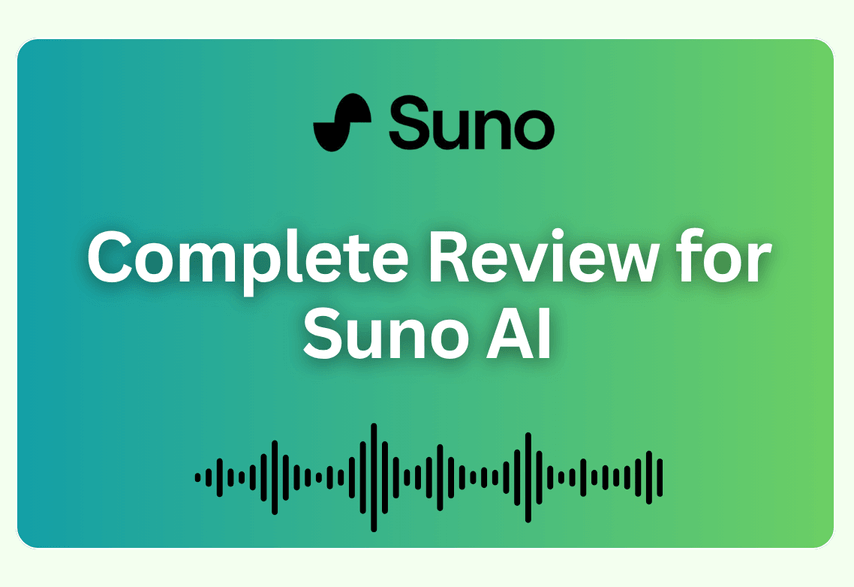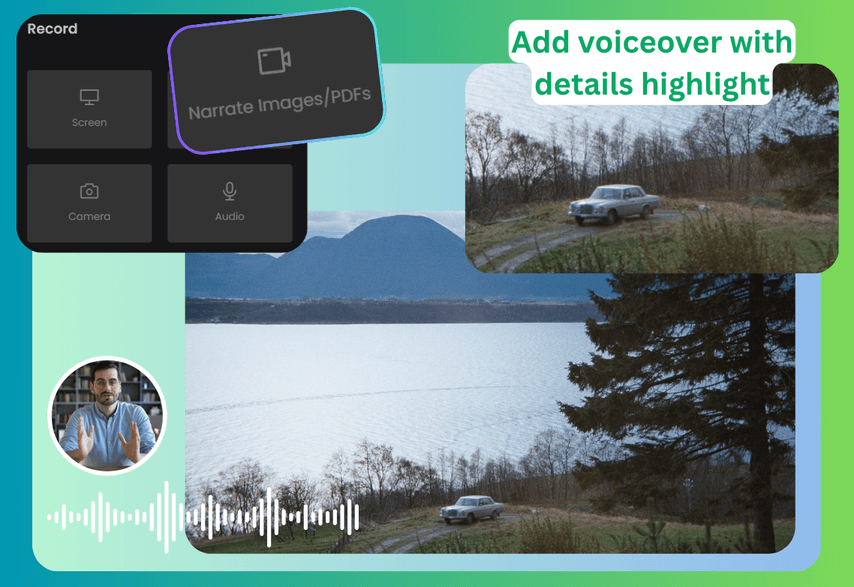In the ever-accelerating symphony of artificial intelligence, a new composer has taken the stage, and its name is Suno. This AI-powered music generation platform has captivated the internet, enabling anyone to create full-fledged songs from simple text prompts. What was once the domain of trained musicians and seasoned producers is now accessible to all, sparking a wave of creativity and a firestorm of debate. This in-depth analysis will explore the world of Suno AI, from its origins and technology to its business model and the profound questions it raises about the future of music.
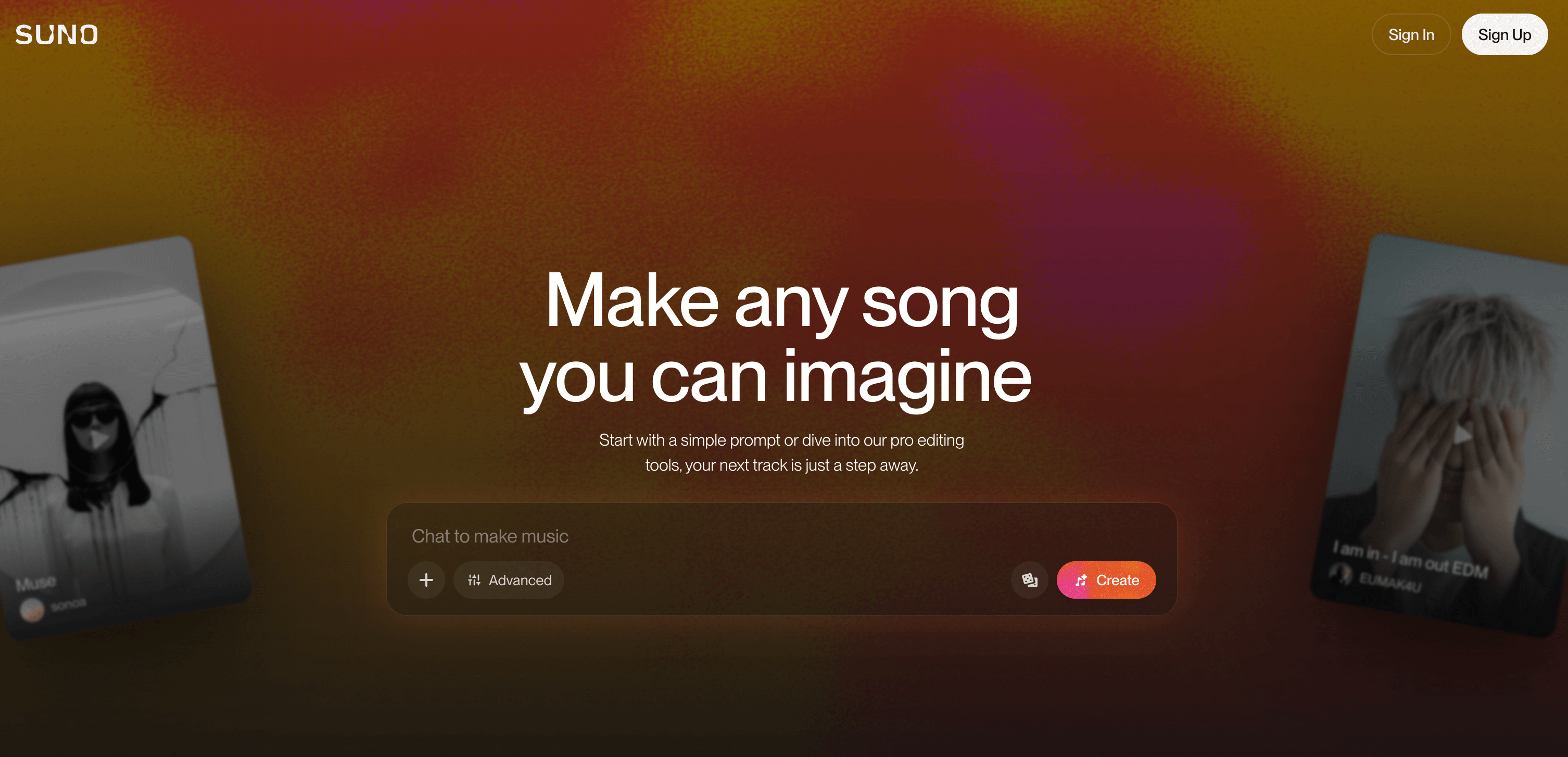
Basic Information of Suno AI
The Genesis of Suno
Suno, Inc., was founded in 2021 in Cambridge, Massachusetts, by a quartet of minds deeply rooted in the world of artificial intelligence: Michael Shulman, Georg Kucsko, Martin Camacho, and Keenan Freyberg. All four honed their skills at Kensho, an AI startup, before embarking on their own venture. The team, comprised of musicians and AI experts, some of whom are alumni of tech giants like Meta and TikTok, set out with a mission to build a future where anyone can make music.
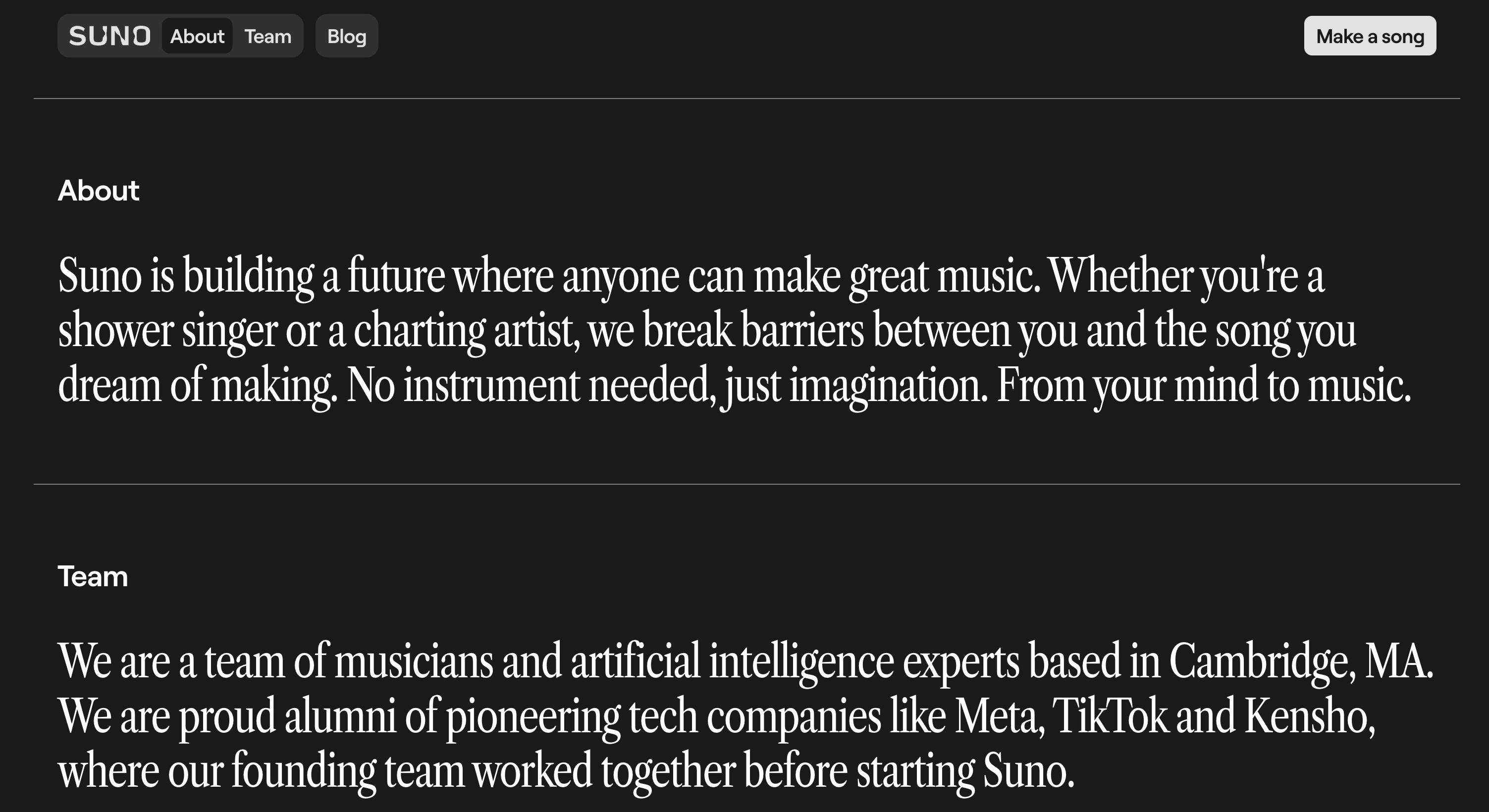
While the specific origin of the name "Suno" is not publicly detailed, it evokes a sense of listening and sound, fitting for a platform dedicated to music creation.
The company's public journey began in April 2023 with the release of Bark, an open-source text-to-speech and audio model on GitHub. However, it was the launch of their web application in December 2023 that truly brought Suno into the limelight. A strategic partnership with Microsoft, which integrated Suno as a plugin in its Copilot, further amplified its reach.

Based in Cambridge, Massachusetts, a hub of technological innovation, Suno has grown its team to an estimated 11-50 employees as of mid-2025.
A Symphony of Funding
Suno's innovative approach to music creation has attracted significant attention from investors. The company has raised a total of $125 million. A Series B funding round on May 21, 2024, brought in a substantial $125 million, led by Lightspeed Venture Partners, with participation from notable investors including Nat Friedman, Daniel Gross, Matrix, and Founder Collective. This round valued the company at $500 million.
The company's financial growth has been as impressive as its technological advancements. Sacra estimates that Suno's annual recurring revenue (ARR) hit $45 million at the end of 2024 and is projected to reach $147 million by September 2025. More recent reports suggest the company is already generating over $100 million in ARR and is in talks for a new funding round that could value it at over $2 billion.
A Growing Chorus of Users
Suno has amassed a substantial user base in a remarkably short period. The platform has attracted over 10 million users, a testament to its accessibility and the universal appeal of music creation. By May 2024, the community had grown to over 12 million people. The platform's user-friendly interface has made it a destination for a diverse audience, from complete novices to professional musicians seeking a new wellspring of inspiration.
Product Details About Suno AI
The Vision: Democratizing Music
Suno's product positioning is clear and ambitious: to democratize music creation. Their goal is to break down the barriers that have traditionally kept people from expressing themselves musically, such as the need for instrumental proficiency or knowledge of complex production software. Suno aims to be the "AI-native version of SoundCloud," not for the 40 million musicians already on that platform, but for the 600 million-plus people who listen on platforms like Spotify.
A Broad Audience
Suno's target user groups are incredibly diverse, a direct result of its accessible design. They include:
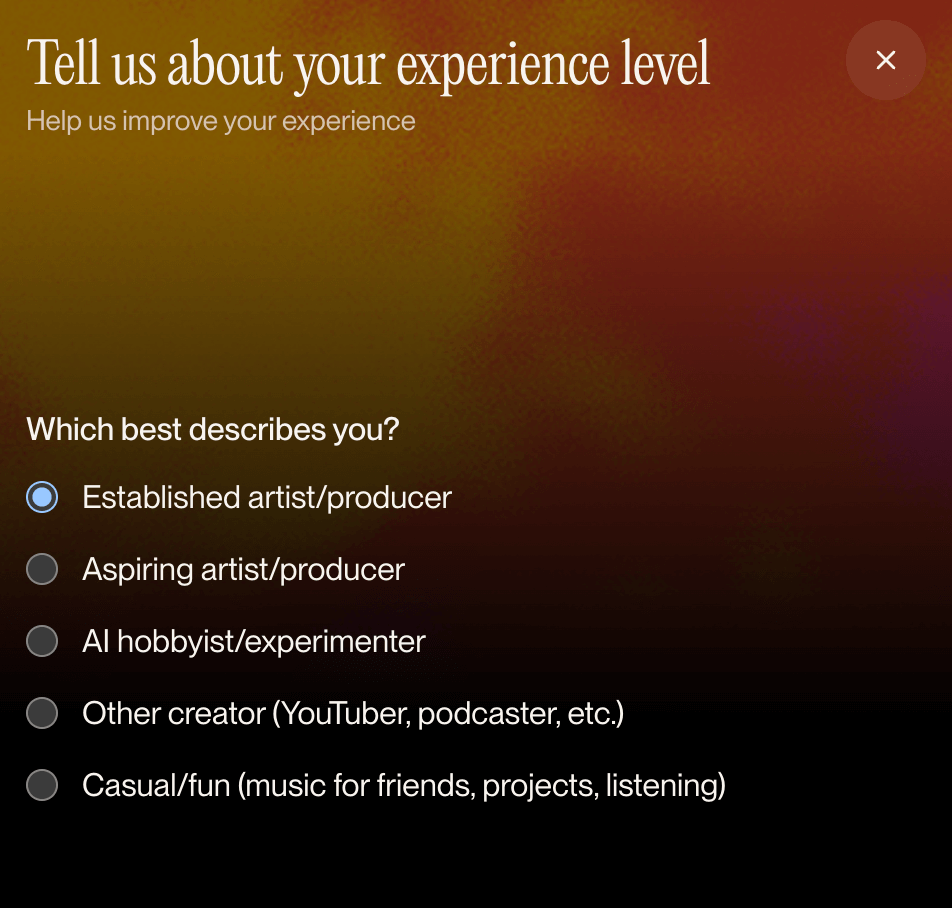
- Content Creators and Marketers: In need of royalty-free, custom music for videos, podcasts, and other media.
- Aspiring Musicians and Hobbyists: Individuals who have musical ideas but lack the technical skills to bring them to fruition.
- Educators and Students: A tool for teaching musical concepts and for students to create music for projects.
- Professional Musicians: As a source of inspiration, a tool for sketching out ideas, or a way to experiment with new styles.
A Myriad of Use Cases
The applications of Suno's technology are as varied as its user base. People are using Suno to:
- Generate full songs from simple text prompts.
- Create custom lyrics.
- Develop playlists for different moods and occasions.
- Educate students about musical structures and styles.
- Have fun with family and friends, creating personalized songs for special events.
The Key Features
Suno's power is channeled through its sophisticated yet user-friendly interface, Suno Studio. This web-based platform is the central hub where all creation takes place, containing a suite of powerful features:
-
Suno Studio (only accessible to Premiere Plan) - The Interactive Creation Interface: Suno Studio is the web-based Digital Audio Workstation (DAW-lite) where users create, manage, and refine their music. It moves beyond a simple prompt box, offering a more integrated environment. Key functions within the Studio include:
Structural Prompting: Users can guide the AI by embedding tags like [Verse], [Chorus], [Guitar Solo], or [Intro] directly into their lyrics, giving them more directorial control over the song's structure.
Song Extension: Paid users can extend their creations, building longer and more complex compositions from an initially generated clip.
Cover Mode: This allows users to take an existing song they've generated and "cover" it, re-imagining the same lyrics and basic melody in a completely different genre or style.
- Advanced Text-to-Music Generation: The core function where users describe a genre, mood, and lyrical themes to generate a song from scratch. Suno's models can interpret a vast array of styles, from mainstream pop and rock to niche genres and fusions.
- Custom and AI-Generated Lyrics: Users have the flexibility to write and input their own complete lyrics for the AI to perform. For those who need inspiration, Suno can also generate lyrics based on a simple topic or theme.
- High-Quality Vocal Synthesis: A key differentiator for Suno is its ability to produce surprisingly realistic and expressive vocals in various styles and languages. The AI can generate both male and female voices that fit the requested genre.
- Instrumental Mode: For users who need background music, scores, or beats, Suno can create purely instrumental tracks by enabling a toggle, ignoring any lyrical input.
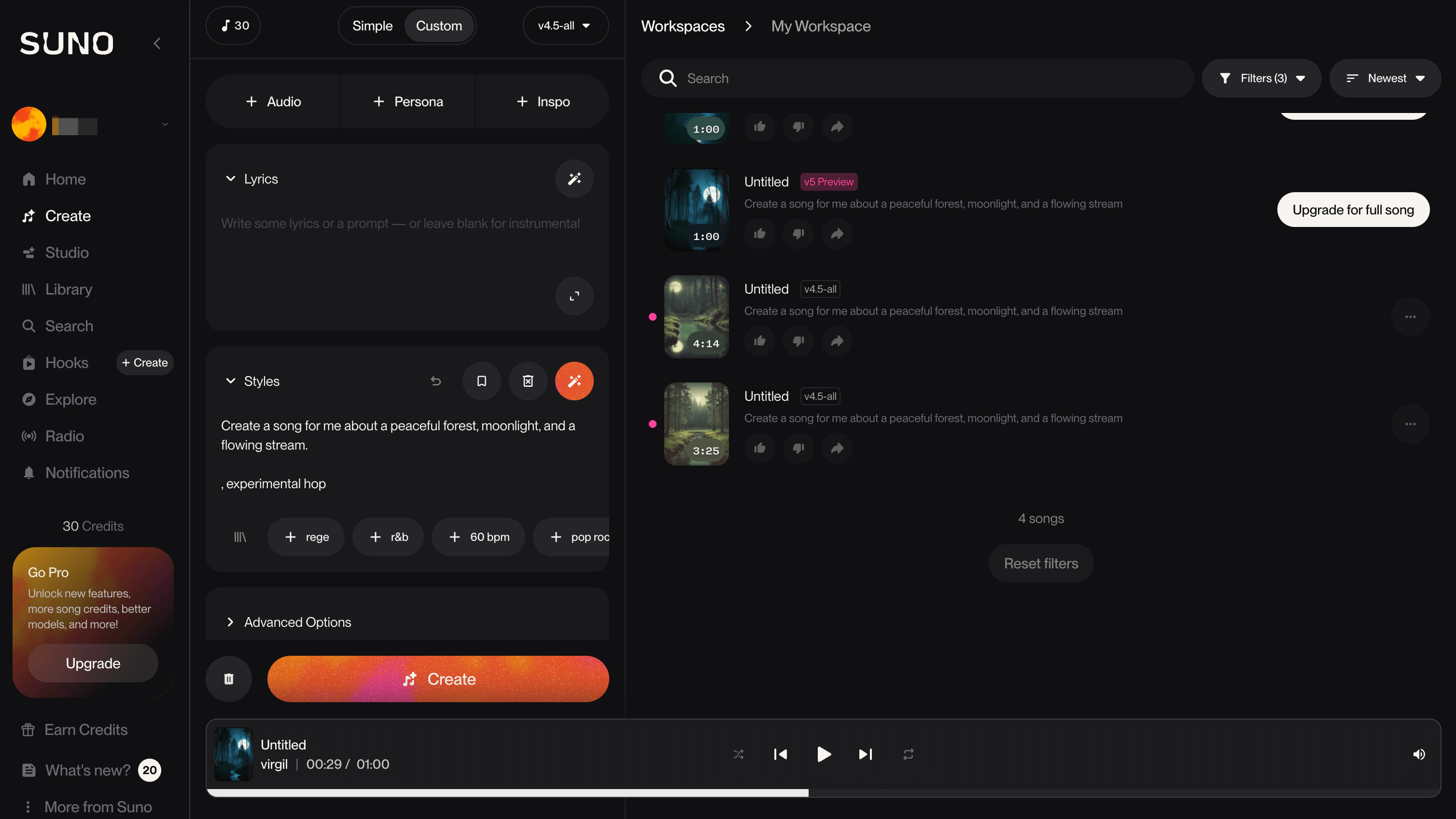
The Strengths of Suno: A Harmonious Blend
Suno's rapid rise can be attributed to several key advantages:
- Accessibility: Its intuitive interface makes music creation possible for individuals with no prior musical experience.
- High-Quality Output: Suno is capable of producing professional-sounding music with impressive audio quality.
- Speed and Efficiency: The platform can generate complete songs in a matter of minutes, a significant time-saver for creators.
- Cost-Effective: Compared to the expense of hiring musicians or booking studio time, Suno offers an affordable alternative for creating original music.
- Vocal Generation: Suno's ability to generate coherent and often emotive vocals is a significant differentiator from many of its competitors.
The Limitations: A Few Dissonant Notes
Despite its impressive capabilities, Suno is not without its weaknesses:
- Limited Customization: Advanced users may find the level of control over musical elements, such as specific melodies, harmonies, and arrangements, to be restrictive.
- Potential for Homogeneity: Some users have noted that the generated music can sometimes sound stylistically similar.
- Emotional Nuance: While the AI can generate technically proficient music, it can sometimes lack the deep emotional resonance of human-created art.
- Ethical and Copyright Concerns: The most significant cloud hanging over Suno is the ongoing debate about the data used to train its AI models, with accusations of copyright infringement from major record labels.
Business Model of Suno AI
The Freemium Approach
Suno operates on a freemium business model, which has been instrumental in its rapid user acquisition. This model allows users to experience the core features of the platform for free, with limitations, while offering paid subscription tiers for those who require more extensive use and advanced features.
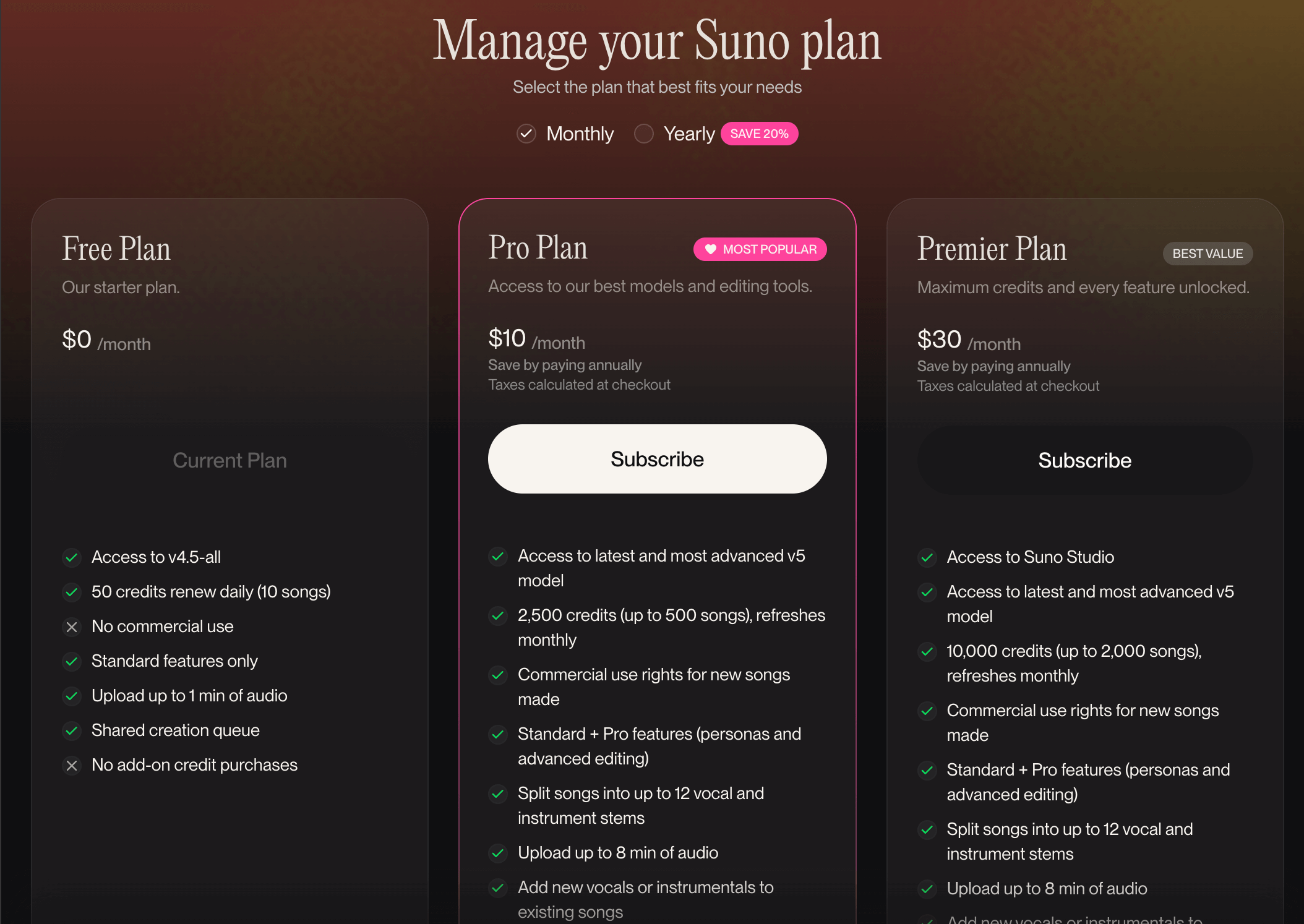
A Tiered Pricing Structure
Suno's pricing is designed to cater to a range of users, from casual hobbyists to professionals:
- Free Plan: This plan offers a limited number of daily credits (typically 50, which translates to about 10 songs) for non-commercial use.
- Pro Plan: Aimed at more active users, this plan provides a larger monthly credit allowance (around 2,500 credits or 500 songs) and allows for commercial use of the generated music. The pricing is approximately $10 per month, with a discount for annual billing.
- Premier Plan: For heavy users and professionals, this tier offers the highest number of monthly credits (around 10,000 credits or 2,000 songs) and priority access to the generation queue. The cost is around $30 per month, with an annual discount option.
The company has been successful in converting a significant portion of its free users to paid subscribers, with reports suggesting that nearly 50% of first-time users hit the limits of the free tier.
Competitive Analysis of Suno AI
A Crowded Field of AI Music Generators
The AI music generation space is becoming increasingly competitive, with a number of players vying for market share. Suno's main competitors include:
- Udio: Often cited as Suno's closest competitor, Udio is also capable of generating high-quality, full-length songs with vocals. Some users perceive Udio as having slightly higher audio fidelity and more complex musical arrangements.
- AIVA (Artificial Intelligence Virtual Artist): AIVA is known for its strength in creating classical and orchestral music and is often favored by those with a more traditional music background.
- Soundraw: This platform is popular among content creators for its ability to generate royalty-free background music that can be customized by mood, genre, and length.
- Beatoven.ai: This platform allows users to create royalty-free music tailored to specific moods and genres, making it a useful tool for video and podcast creators.
Suno's Differentiated Edge
Despite the strong competition, Suno has several key advantages that set it apart:
- Vocal Quality and Coherence: Suno is widely praised for the quality and naturalness of its AI-generated vocals and the coherence of its lyrical content.
- Ease of Use: The platform's simplicity and intuitive interface make it more accessible to a broader, non-musician audience compared to some of its more complex competitors.
- Speed of Generation: Suno is remarkably fast, delivering complete songs in a very short amount of time.
- Strong Community: The active and engaged user community on platforms like Discord provides a valuable feedback loop and a sense of belonging for creators.
In a head-to-head comparison with its main rival, Udio, the consensus is that Suno is more beginner-friendly and excels at creating catchy, radio-ready tracks quickly, while Udio may offer more depth and control for experienced users seeking professional-grade audio.
User Acquisition
A Multi-Channel Strategy
Suno has employed a variety of strategies to attract its massive user base:
- Viral Marketing: The inherent shareability of music has been a powerful engine for growth. Users naturally want to share the songs they've created, leading to organic, word-of-mouth promotion on social media platforms.
- Strategic Partnerships: The integration with Microsoft Copilot was a masterstroke, exposing Suno to a vast, pre-existing user base.
- Community Building: Suno has fostered a strong community on platforms like Discord, where users can share their creations, collaborate, and provide feedback to the developers.
- Public Relations and Media Coverage: The novelty and impressive capabilities of Suno have garnered significant attention from tech and music publications, further boosting its visibility.
- Freemium Model: The free tier acts as a powerful lead magnet, allowing anyone to try the platform with no financial commitment.
Notable Viral Moments

While specific, large-scale viral marketing events are not extensively documented, the platform's growth is a testament to countless smaller viral moments. A song created on Suno about a niche topic can easily go viral within a specific community, leading to a ripple effect of new users discovering the platform. The "Summer of Suno" program, which offered $1 million in payouts to popular tracks created on the platform, was a direct attempt to encourage and reward this kind of viral sharing.
User Reviews of Suno AI
I collected authentic user reviews from Trustpilot and categorized them into positive and negative, as follows:
The Positive Chorus
Based on a large volume of user feedback, Suno is overwhelmingly praised as a revolutionary, "mind-blowing," and game-changing tool for music creation. The positive sentiment is shared by both veteran musicians and complete novices, who highlight several key strengths.
1. Empowerment and Accessibility: The most prominent theme is that Suno empowers people who lack musical training to bring their creative ideas to life. Users who can't sing or play instruments describe it as a "dream come true," allowing them to finally produce the songs they've had in their heads for years. This democratization of music creation is frequently celebrated.
2. Surprising and Professional-Grade Quality: Many users are "blown away" by the high quality of the music generated, with some describing the output as "near-professional grade" and "unbelievably good." Several reviewers mentioned creating songs that they believe have the potential to be "smash hits" with a little extra production, and they praise the emotive and clear vocals the AI can produce.
3. An Invaluable Tool for Musicians: Experienced musicians find Suno to be an exceptional tool for inspiration and productivity. They use it to break creative blocks, audition different styles and genres for their own compositions, and quickly create high-quality productions for their backlog of songs. Renowned producer Timbaland was even mentioned as using it for creative inspiration in his studio.
4. It's a Skill to Master: A recurring insight from satisfied users is that getting great results from Suno requires patience and skill. They compare it to learning an instrument, emphasizing that users need to learn how to write effective prompts, be willing to generate many versions to find a great one, and not expect perfection on the first try. This perspective frames Suno not as a magic button, but as a powerful tool that rewards effort.
5. Excellent Value and Fair Policies: The pricing is frequently cited as a major positive. Users find the subscription plans, such as receiving hundreds of songs for just $10, to be incredible value for money. The generous free plan is also appreciated. Furthermore, some users praise Suno's customer-friendly policies, like allowing users to keep their credits even after canceling a subscription.
6. Fun and Entertainment: Beyond its professional applications, many users simply describe Suno as incredibly fun and "addictive." They enjoy the process of experimenting with different prompts, writing their own lyrics, and creating catchy, personal, or funny songs with ease.
The Critical Feedback
The negative feedback for Suno is dominated by severe and widespread issues related to billing practices, non-existent customer support, and significant technical problems, leading many users to label the service a "scam" and "unethical."
1. Aggressive and Fraudulent Billing Practices: This is the most frequent and severe complaint. A vast number of users report:
- Unauthorized Charges: Many individuals claim they were charged despite never subscribing or even hearing of the service, suggesting a potential data breach or fraudulent activity.
- Inability to Cancel Subscriptions: A recurring theme is the extreme difficulty in canceling a subscription. Users describe hidden buttons, non-functional cancellation processes, and being charged for months after they believed they had successfully unsubscribed.
- Being Charged for Services Not Received: Numerous paying subscribers report being downgraded to the free plan, locked out of their accounts, or not receiving their purchased credits, all while the company continues to charge them.
- No Refunds: Users who were accidentally charged for annual plans or who did not receive the service they paid for report that it is impossible to get a refund.
2. Completely Non-Existent Customer Support: The billing issues are massively compounded by what users describe as a complete absence of customer service.
- Ignored Communications: Users consistently state that emails to both support and billing addresses go completely unanswered for weeks or months, if they are ever answered at all. The only response is often an automated message.
- No Alternative Channels: Attempts to reach the company via Discord or social media are also reported to be ignored.
- Feeling of Helplessness: This lack of communication leaves users with no recourse to solve billing disputes or technical issues, forcing them to resort to bank chargebacks and report the company for fraud.
3. Declining Quality and Technical Failures: Beyond the business practices, many users are deeply frustrated with the product itself.
- Poor and Inconsistent Audio Quality: Complaints mention that the sound quality has degraded over time, with tracks suffering from hissing, background noise, compression artifacts, and vocals that sound "robotic" or disappear in the mix.
- AI Ignores Prompts: A major frustration is that the AI frequently disregards user prompts, generating the wrong genre, using a female vocal when a male one was requested, or failing to follow lyrical structures.
- Wasted Credits: Because of the numerous errors, bugs, and poor-quality outputs, users report wasting a significant number of their paid credits on unusable generations with no system for reimbursement.
- Buggy Platform: The website and app are described as slow, prone to errors, and having features (like extending a song or editing lyrics) that often don't work as intended.
4. Account and Access Issues: Many paying customers find themselves unable to even use the service they paid for, reporting that their accounts were deleted, they were locked out, or all their created songs and credits simply vanished without explanation.
Comprehensive Assessment
Opportunities and Strengths
Suno is well-positioned to capitalize on the growing interest in generative AI and the universal human desire for creative expression. Its key strengths and opportunities include:
- Massive Untapped Market: Suno's focus on the non-musician market opens up a vast potential user base that has been largely ignored by traditional music creation tools.
- Technological Leadership: Suno is currently at the forefront of AI music generation, particularly in the area of vocal synthesis.
- Strong Brand Recognition: The platform has quickly become one of the most well-known names in the AI music space.
- Potential for Collaboration: There are significant opportunities for Suno to partner with other creative platforms, social media companies, and even the music industry itself.
- Expanding Feature Set: As the underlying AI technology improves, Suno has the opportunity to add more advanced features and greater customization options to its platform.
Risks and Threats
Despite its promising future, Suno faces several significant risks and threats that could impede its growth and success:
- Legal and Ethical Challenges: The lawsuits from major record labels represent an existential threat. A ruling against Suno could have devastating financial consequences and force a fundamental change in its business model. The core of the issue is the allegation that Suno trained its AI on copyrighted music without permission.
- Intense Competition: The AI music generation landscape is highly competitive, and Suno will need to continue to innovate to stay ahead of rivals like Udio and others.
- Devaluation of Music: There is a real concern among many musicians and industry professionals that AI tools like Suno could devalue the craft of music creation and make it more difficult for human artists to make a living.
- Misuse of the Platform: The potential for users to create harmful or offensive content using the platform is a significant reputational risk.
- Public Perception: The broader public's perception of AI and its role in the creative arts will play a crucial role in the long-term success of platforms like Suno.
Purchase Advice
Deciding whether to pay for Suno requires weighing its creative power against significant risks. For hobbyists and casual creators, the free plan is highly recommended. It offers the core experience of turning ideas into music without any financial commitment.
Those considering a paid plan for commercial use must proceed with extreme caution due to widespread reports of severe billing issues and nonexistent customer support. To mitigate risk, never use a primary credit or debit card; opt for a virtual card or a service like PayPal instead. Always start with a monthly subscription to test the service and its cancellation process before committing to an annual plan. Assume you will receive no help if you encounter a problem.
Ultimately, Suno excels as an inspirational sketchpad for generating demos and breaking creative blocks. However, due to inconsistent audio quality and a lack of granular control, it is not a substitute for a professional production tool for creating final, release-ready tracks
In conclusion, Suno AI has orchestrated a paradigm shift in music creation, composing a future where the ability to make music is no longer a privilege but a possibility for all. Its user-friendly interface and impressive technological capabilities have struck a chord with millions, unleashing a torrent of creativity. However, the crescendo of its success is accompanied by a dissonant undertone of legal and ethical challenges that threaten to silence its symphony. The final composition of Suno's story, and indeed the future of AI in music, is yet to be written. It will be a collaborative piece, co-authored by innovators, artists, and society as a whole, as we all learn to navigate this brave new world of artificial creativity.
